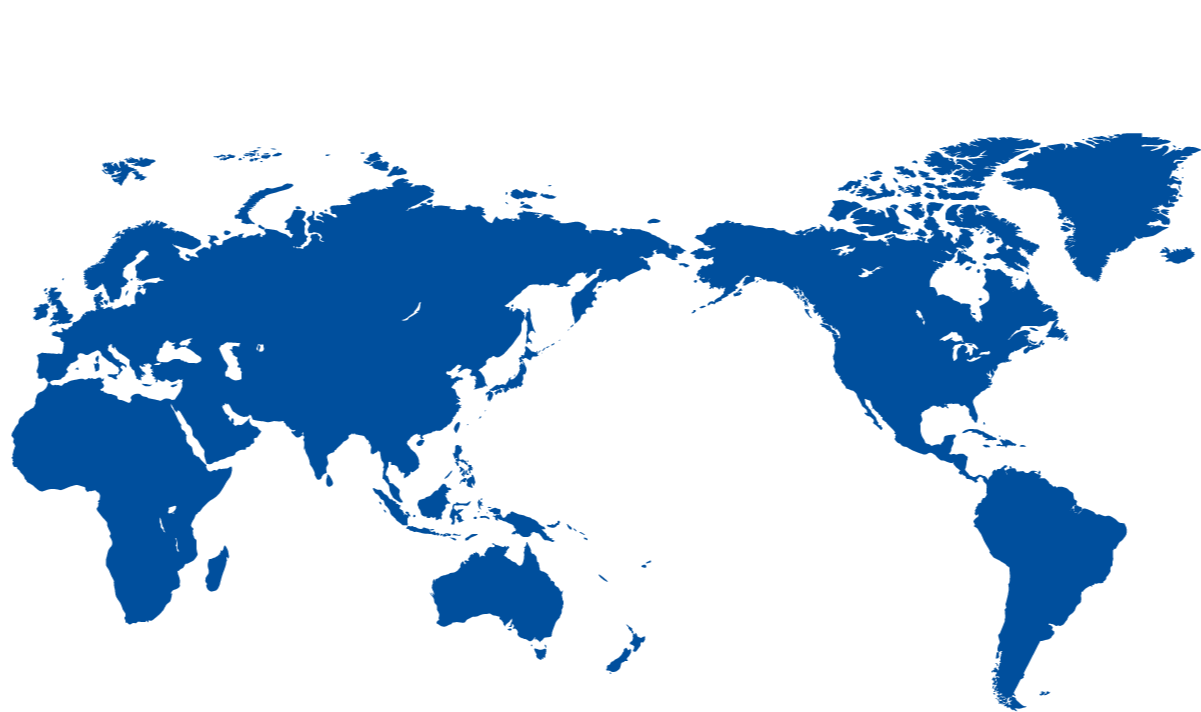Choho Vol. 80, the newsletter of Nagasaki University, features "Nagasaki University and Ukraine".
It introduces the relationship between Nagasaki University and Ukraine, the support Nagasaki University provides, and its history.
Nagasaki University’s Over-35-year Relationship with Ukraine and the Background to Its Support for the Country
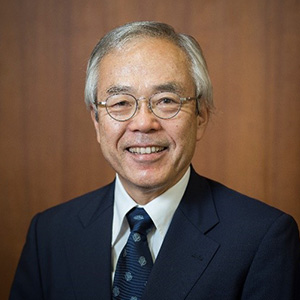
KOHNO Shigeru
President of Nagasaki UniversityOn March 18, 2022, Nagasaki University announced that it would accept Ukrainian refugee students at the University. The Russian invasion of Ukraine, which started on February 24, has prompted the evacuation of Ukrainian students and caused damage to the universities they attended, forcing many of the students to suspend their studies. This being the case, the University has decided to support Ukrainian students who have been deprived of learning opportunities by providing them with a place to continue their studies.
In the background to this decision lies the devastation Nagasaki suffered from the atomic bomb. Having been involved in and continued to watch the reconstruction process of the city devastated by the catastrophe of the atomic bomb, Nagasaki and Nagasaki University have always recognized the importance, power and value of continuing to learn and accumulate knowledge. Above all, we are aware that the very existence of young people with aspirations to further their learning in whatever adversity they face will become the foundation and the hope for the future of their country. Such recognition has served as a major driving force in our decision to support students from Ukraine.
Ukraine’s land and infrastructure have sustained extensive damage. In order to rebuild them, many people equipped with expert knowledge will be absolutely required in every field. We embarked on this support effort in the belief that someday what the Ukrainian students have learned in Japan and at Nagasaki University will surely be used to aid the reconstruction of their country.
As another thing to note, Nagasaki University has maintained its long-term relationship with Ukraine since 1990. At the time of the Chernobyl Nuclear Power Plant accident in 1986, a medical survey support team of the University visited the site earlier than any other missions from Japan, engaging in health surveys of local residents and support activities. The cooperative relationship then established continues into the present taking different forms, and our faculty members have actually made frequent visits to Ukraine to date. In this regard, Ukraine and Nagasaki University boast a very long, profound relationship history of over 30 years.
There is a proverb that says, “Turn misfortune to an advantage.” It is my hope that, by taking advantage of this occasion, our cooperative relationship with Ukraine, previously centered on interaction between researchers, will expand and develop to include ties between students and in the area of education, thereby helping build a better future.
The Chernobyl Nuclear Power Plant accident occurred before dawn on April 26, 1986. While the Soviet Union and western countries were in a state of Cold War at the time, the immensity of the damage extending widely over Europe prompted behind-the-scenes support operations to be launched by the United States just one week after the accident.
Two Turning Points Emerged through Medical Support Activities

YAMASHITA Shunichi
Vice President, Fukushima Medical UniversityDirector, Fukushima Medical University Global Exchange Center
Director, National Institutes for Quantum Science and Technology
Professor Emeritus, Nagasaki University

In August 1990, through the aid from the Japan Shipbuilding Industry Foundation (now, “The Nippon Foundation”), a mission of Japanese experts was dispatched to the site of the disaster with the participation of, among others, Professor NAGATAKI Shigenobu from the First Department of Internal Medicine at then Nagasaki University Hospital of the School of Medicine. Starting the following year, supportive efforts by Nagasaki and Hiroshima Universities and other institutions swung into full gear, with the establishment of diagnostic centers as their activity bases in five locations in Russia, Belarus and Ukraine (in Ukraine, in the two locations of Kyiv and Korosten) under the name of the “Chernobyl Sasakawa Health and Medical Cooperation Project.” Experts from Nagasaki and Hiroshima Universities made routine rounds of the locations, where they were divided into the four groups of thyroid gland, hematology, radiation levels, and epidemiology, to perform diagnosis and evaluation. During this period, the following two events became significant turning points.
The first turning point was a research survey related to the causal relationship between the nuclear accident and thyroid disease. Data suggesting an increase in the incidence of childhood thyroid cancer, based on examination data of about 120,000 children aged from zero to five years old at the time of the accident, were reported five years after the accident. In order to prove the effect of radiation on thyroid disease, we conducted an epidemiological survey jointly with an international organization. The results of this five-year-long survey demonstrated for the first time in the world that the direct health effects of the Chernobyl nuclear accident were confined to thyroid cancer caused by consuming milk from cows that had grazed on contaminated grasslands immediately after the accident. These survey results have led to the assignment of top priority to inspections and disposal of contaminated milk in subsequent similar accident cases.
The second turning point involved human resource development. Conducting follow-up activities over a long period of time required the development of local talent. Nagasaki University has accepted trainees from countries stricken by the nuclear accident through Nagasaki Association for Hibakushas' Medical Care (NASHIM), established in 1992, and has provided training in diagnosis and analysis technologies. Today, the University continues to serve as a venue for cross-border academic exchange among experts from those countries. In Ukraine’s particular case, Nagasaki University, the Institute of Endocrinology and Metabolism, and the Research Center for Radiation Medicine, both in Kyiv, signed an agreement on academic cooperation, which has since yielded satisfactory results such as joint research.
In mid-February, 2011, a Coordination and Planning Meeting of the WHO’s REMPAN (Radiation Emergency Medical Preparedness and Assistance Network) was held in Nagasaki, bringing together experts in radiation emergency medicine. The meeting program included conducting a simulation exercise in the event of a radiation accident, and building networks for information sharing. At that time, we never thought that our experience gained from Chernobyl would be leveraged in Fukushima before even a month had passed.
Lessons Learned from Chernobyl and
Support for Fukushima’s Reconstruction

TAKAMURA Noboru
Professor, Atomic Bomb Disease Institute, Nagasaki UniversityDirector, Research and Support Center for the Future of Fukushima
Director, Great East Japan Earthquake and Nuclear Disaster Memorial Museum

We left for Fukushima as experts in radiation medicine following the accident at the Fukushima Daiichi Nuclear Power Plant, which was caused by the Great East Japan Earthquake on March 11, 2011. The team conducted assessment and management of health risks of residents due to radiation exposure. In addition, Professor YAMASHITA Shunichi and I delivered lectures based on the data collected at Chernobyl. This activity led to my encounter with Mayor Endo of Kawauchi Village, who later issued a declaration, ahead of other local governments, urging residents to return to their homes in the village from their evacuation site. In December 2011, we started providing support for Kawauchi Village’s reconstruction, and have since continued to assist the return of residents and carry out risk communication activities after their return. Satoyama, or traditional Japanese rural landscapes, is now reviving with verdure restored to the fields in the village, which were once barren while the residents were evacuated.

The Fukushima Health Management Survey, launched just three months after the nuclear accident, is still being conducted today in the five areas of radiation doses, thyroid gland, health, expectant and nursing mothers, and mental health. Furthermore, in addition to Kawauchi Village, we have proceeded with the establishment of new bases for reconstruction support activities in other municipalities. Our efforts in this regard are still ongoing even 11 years after the accident; the pursuit of reconstruction support is indeed a long haul, and the upcoming years will be crucial for us. So there is no doubt that our experience gained from Chernobyl will provide a strong impetus for our efforts. We will continue our support with strong will and commitment, as well as with lessons learned, while keeping in mind the feelings of those who have suffered damage from the nuclear accident.
On the Occasion of Accepting Ukrainian Students

MORIGUCHI Isamu
Trustee (Educational Affairs)Nagasaki University decided to accept undergraduate and graduate students from Ukraine with the aim of providing them with an opportunity to receive a higher education continually and with peace of mind. In preparation for the acceptance, we conducted individual online interviews with each of the students who were confirmed earlier on their documents, to satisfy the conditions set by the University. Upon verifying that their English proficiency was sufficient to understand lectures at Nagasaki University and also that those studying Japanese had sufficient mastery of the language, we sent them letters of acceptance.

In addition, after their arrival in Nagasaki, we carefully provide mental health care services on a top-priority basis. Some of the students were indeed very sensitive to loud sounds such as airplane engines when they first arrived. We will continue to improve our acceptance of and support for students from Ukraine, so that they can study and lead a life in a calmer and more comfortable environment and will feel glad they came to Nagasaki University, in the hope that after studying in Nagasaki, they will take center stage in Ukraine’s reconstruction efforts.
| 1986
|
Chernobyl Nuclear Power Plant accident On April 26, one of the nuclear reactors at the plant became uncontrollable during a test, which led to the meltdown of the reactor, followed by its explosion. The accident caused a significant amount of radioactive substances to spread around Europe and other parts of the world. |
|---|---|
| 1990
|
Nagasaki University dispatches medical professionals to UkraineIn August, three professors from Nagasaki University, including Professor Shigenobu Nagataki, then with the First Department of Internal Medicine, Nagasaki University School of Medicine, traveled to Ukraine and laid the foundation for support in the coming years. 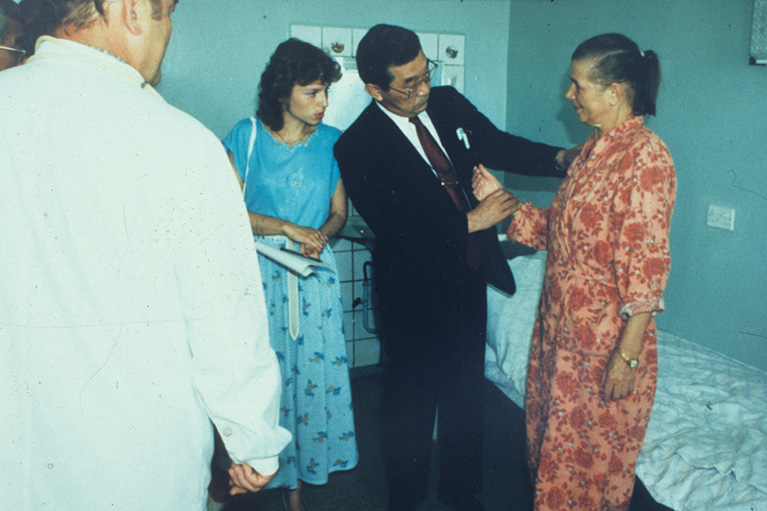 Photo courtesy of HARADA Mari Photo courtesy of HARADA Mari |
| 1991
|
Nagasaki University starts on-site support in UkraineNagasaki University, in collaboration with Hiroshima University, the then National Institute of Radiological Sciences, and the Radiation Effects Research Foundation, embarked on a health management survey and medical assistance in Ukraine. |
| 1992
|
Nagasaki Association for Hibakushas’ Medical Care (NASHIM) is establishedThe Association was established for the purpose of inviting medical professionals and researchers from countries near Chernobyl Nuclear Power Plant and nurturing them to be capable of dealing with radiation medicine. More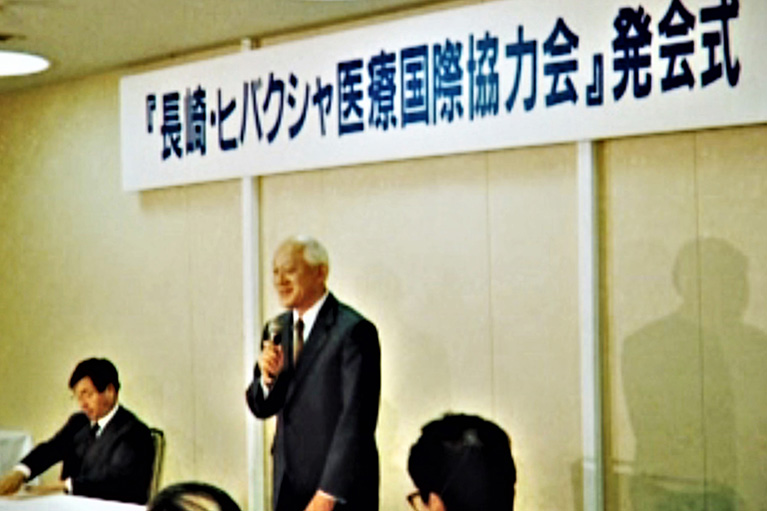 Photo courtesy of NASHIM Photo courtesy of NASHIM |
| 2003
|
An academic agreement is signed with research institutions of UkraineIn February, Nagasaki University signed an Agreement on Academic Cooperation with the Institute of Endocrinology and Metabolism and the Research Center for Radiation Medicine, both in the National Academy of Medical Sciences of Ukraine. 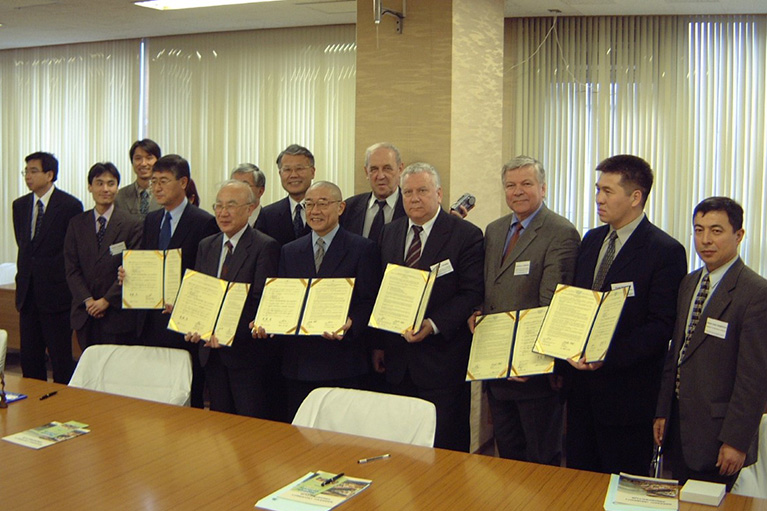 |
| 2011 3.11
|
The Great East Japan Earthquake and an accident at the Fukushima Daiichi Nuclear Power Plant, Tokyo Electric Power CompanyAn earthquake measuring 9.0 on the Richter scale, followed by a tsunami over 10 meters high and then a nuclear accident rated at the highest level of 7 on the International Nuclear Event Scale (INES) constituted a globally unparalleled compound disaster. 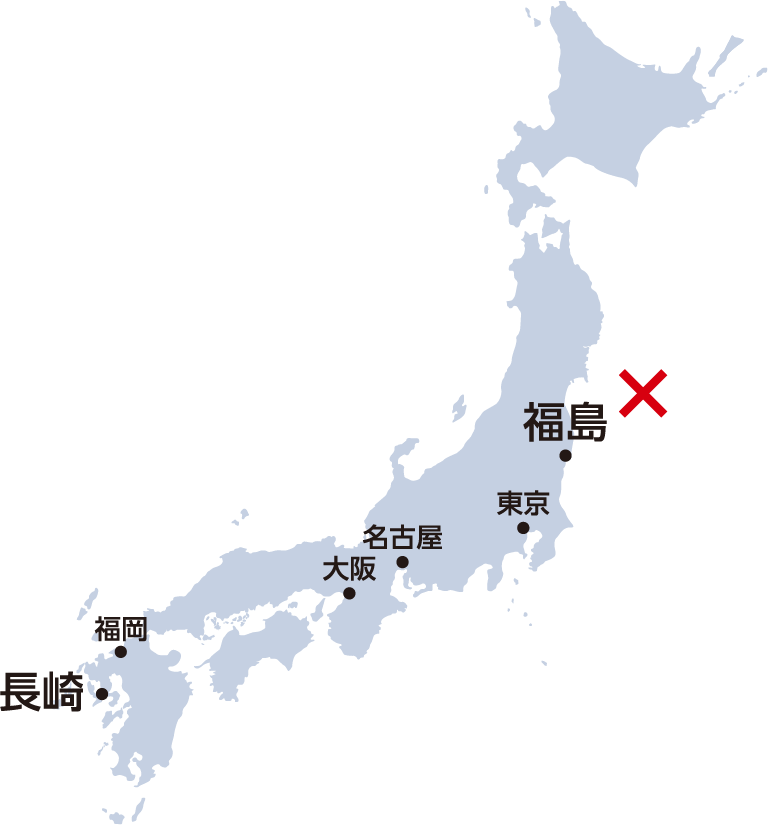 Response immediately after the nuclear accidentIn Fukushima Prefecture, prompt actions were taken based on knowledge gained from Chernobyl, such as disposal of raw milk and suspension of the distribution of fresh vegetables and other food. Launch of the Fukushima Health Management SurveyBased on knowledge gained from Chernobyl, Fukushima Prefecture, with the cooperation of Nagasaki University, etc., started a health survey of its residents just three months after the occurrence of the nuclear accident. More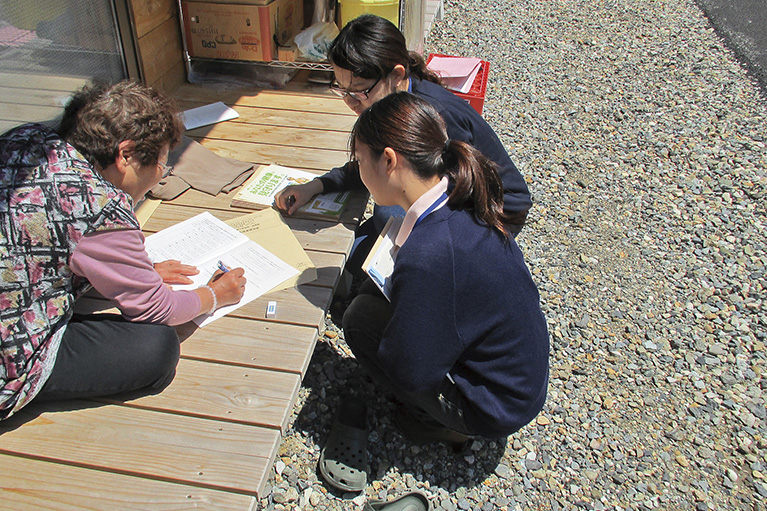 Photo courtesy of Fukushima Medical University Photo courtesy of Fukushima Medical University |
| 2014
|
The Research and Support Center for the Future of Fukushima is establishedNagasaki University established the Center, which is designed to provide comprehensive and concrete support and cooperation in areas such as health, medical care, welfare and education to municipalities struck by the earthquake and the nuclear accident, thereby contributing to building the future of Fukushima. More |
| 2015
|
Division of Disaster and Radiation Medical Sciences (Master’s Program) is establishedNagasaki University and Fukushima Medical University aim to develop human resources who excel at radiation medicine, disaster medicine, and radiation health risk management, and are capable of dealing with compound disasters over a long period of time. More |
| 2022
|
Russian invasion of Ukraine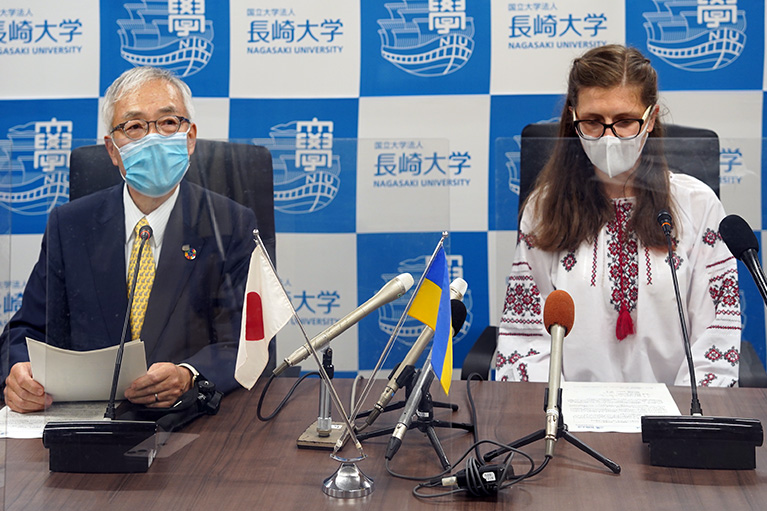 A decision is made to accept Ukrainian refugee studentsFollowing the Russian invasion of Ukraine on February 24, Nagasaki University made a decision on March 18 to accept Ukrainian refugee students. |
Nagasaki University’s
Support for Ukraine
President KOHNO Shigeru Meets with the Ambassador Extraordinary and Plenipotentiary of Ukraine to Japan

On July 6, Dr. KOHNO Shigeru, President of Nagasaki University, visited the Embassy of Ukraine in Japan to meet with His Excellency Dr. Sergiy Korsunsky, Ambassador Extraordinary and Plenipotentiary of Ukraine to Japan. During the meeting, Dr. Kohno explained the outline of Nagasaki University’s acceptance of refugee students from Ukraine that the University had announced earlier on March 18, and reported on the present status, in which 19 students were confirmed to be accepted as of the date of his visit to the Embassy, interviews with more candidates were ongoing with the target student intake set at around 40 in total, and nine students (as of the date of the visit) had already arrived to lead a campus life at Nagasaki University. H.E. Ambassador responded by saying, “Studying in Japan is like a dream come true for them. I am grateful to you for accepting them. I am sure that what they have learned there will someday prove to be useful for Ukraine.” He also asked many questions about the curriculum and other relevant matters. President Kohno conveyed his hope that H.E. Ambassador would visit Nagasaki, see its history for himself, and also meet with and encourage Ukrainian students studying at Nagasaki University.
Experiencing Japanese Culture through the Tea Ceremony

On July 4, the University invited members of the T.N.E.C English Club of Chado (tea ceremony) Urasenke Tankokai Nagasaki Chapter as lecturers, allowing 10 international students, including eight Ukrainians, to experience the tea ceremony as part of their Japanese culture class. In the tea ceremony room set up on the second floor of the Student Union building, the students received an explanation in English of the history and etiquette of the tea ceremony from the lecturers, and then watched a demonstration of the ceremony by them. After that, the students enjoyed matcha, powdered green tea, and Japanese cakes under meticulous instructions given to each of them individually. Although a bit nervous at first, they gradually relaxed and talked with the lecturers with a smile at the end, saying that they had had a good time. Participating Ukrainian students commented: “I enjoyed the tea ceremony because it was my first experience”; “It was interesting to find the differences between Japanese and European cultures”; and “I like the tea ceremony room, which gives us a sense of a uniquely Japanese atmosphere.”
Many Thanks to Alumni and Others for Your Kind Support

Mr. Mizoguchi, Accounting Committee Chair (left) and Ms. Otsuka, President of the Student Council
Many Thanks to Alumni and Others for Your Kind Support
In April 2022, we launched a three-month cloud funding campaign under the title of “For providing Ukrainian students deprived of learning opportunities with a place to continue their studies.” The campaign raised as much as 12.26 million yen, far above our initial target amount of 10 million yen, from 591 people. The donations received from you all have been used to meet expenses incurred by accepting the students, such as airfares, livelihood support allowances, and expenses for purchasing daily commodities needed for the housing we provide.
Offering Support to
Ukrainian Students
We interviewed the people who support Ukrainian students during their stay at Nagasaki University until the end of March 2023 (scheduled). Recharge your batteries while spending time in Nagasaki

In accepting students from Ukraine, Nagasaki University prepared a program centered on liberal arts, covering contents that allow them to come in contact with Japanese culture and Nagasaki history, such as Japanese-language education, Nagasaki peace studies, tea ceremony, and the art of flower arrangement. In addition to support for the students’ learning, consultations on their daily lives are offered by Associate Professor TADA Miyuki and Assistant Professor GUO Yuxin of the University’s Center for Japanese Language and Student Exchange.
“For learning the Japanese language, we first set up a short-term intensive course starting on July 11. Students were divided into two classes, one for starting with learning hiragana characters, and the other for making presentations in Japanese, each of which has one or two classes per day, 30 classes in total, a volume equivalent to one semester. The program will continue to the second semester. Due to time constraints, we hope that the students will study the Japanese language as a means of better enjoying daily life and interacting with many different people. In any case, it is our sincere hope that students will lead a happy life during their stay,” says Associate Professor Tada. Assistant Professor Guo says concerning her experience of previously coming to Japan as an international student, “Studying abroad during this extremely difficult time for the Ukrainian students may be causing them to become mentally sensitive in some way. During their stay here, life may move with a rush, which I hope, nevertheless, will actually allow them to feel peaceful in many ways, thereby storing up their moral energies. Feeling that they are now spending meaningful time will hopefully motivate them in a positive way.
Communal Life Whereby We Have Rapport with Each Other

Ms. HIGA Rion is a freshman in the School of Global Humanities and Social Sciences. She currently shares a room with Sofia from Ukraine in the International Dormitory HORTENSIA.
“I support Sofia mainly in her daily life in various ways, such as by acting as an interpreter for opening a bank account and showing her how to put the garbage out. Three Japanese including myself, plus Sofia, making four in total, share a room. Because we live together, we can spend a longer time together and communicate with each other more frequently, which I think is an advantage of communal life.
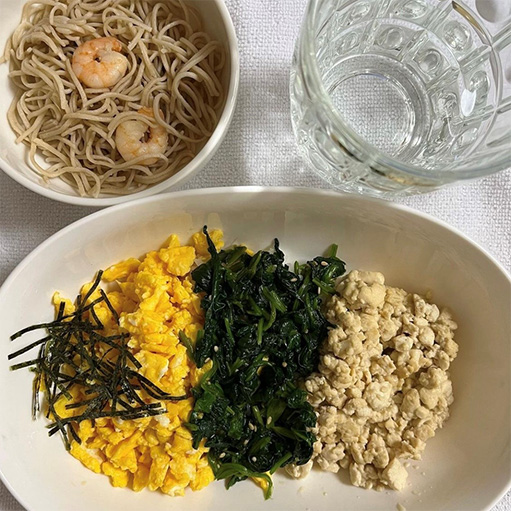
Also in preparing meals, we work together throughout the process, from thinking up a menu to cooking. We prepared sanshoku-don (a bowl of rice topped with three kinds and colors of ingredients) the other day using tofu instead of soboro, flavored minced meat, since Sofia is a vegetarian. I myself have just moved to Nagasaki from Okinawa for admission into the university, so I hope we can go together around tourist spots such as Mt. Inasa, and then I can share with her good things about Nagasaki that I may have discovered there.”

Here are Ukrainian students' campus life updates that we could not share on this page.
Left photo: Ukrainian students visited Peace Park and Atomic Bomb Museum as part of the "Nagasaki Peace Studies" special lecture on July 26.Vol.80
Published September 1, 2022With the concept of "breaking down the barriers between the university and the community," we wish to create a newsletter that attracts the interest of many people at Nagasaki University, sharing our thoughts, vision, and future of Nagasaki University.













